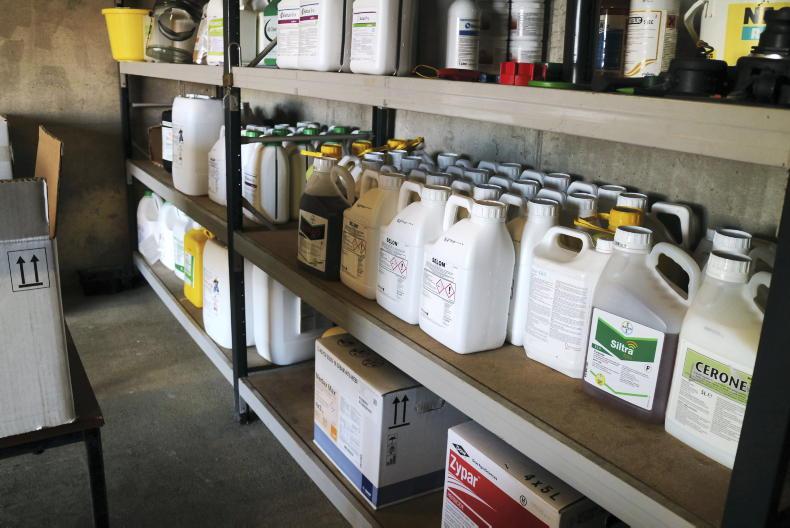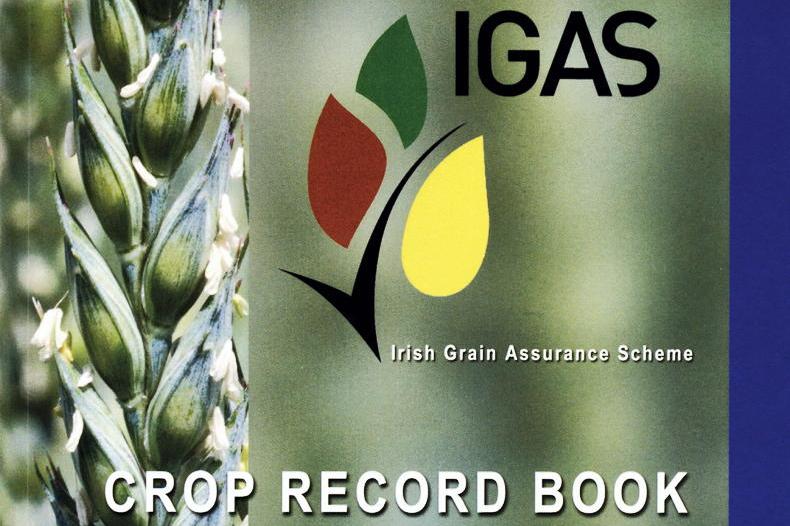University of Galway researchers have found “low level traces” of glyphosate in a quarter of Irish families it tested.
Some 68 farming and non-farming families had their urine tested as part of the first ever study to investigate levels of background exposure to glyphosate among Irish households.
The study tested for the presence of glyphosate and its main human metabolite, aminomethylphosphonic acid (AMPA).
The study analysed tests from 226 people, along with detailed dietary and lifestyle questionnaire.
Glyphosate was detectable in 26% of samples, while AMPA was detectable in 59% of samples.
The daily intakes for participants were back-calculated from urinary glyphosate concentrations and compared to the acceptable daily intake.
Calculated intakes
Their calculated intakes were equivalent to 3% or less of the European Food Safety Authority (EFSA) acceptable level.
Of the 68 families who took part from 2019 to 2020, 14 were living on farms, with one of those family members spraying glyphosate-based pesticide.
There was no statistical difference between farm and non-farm families' exposures, though higher concentrations were detected among some farmers living on farms, which the University of Galway researchers said was “likely because they sprayed glyphosate-based pesticide products the day before sampling”.
There was no statistical difference between farm and non-farm families' exposures
Researchers said the higher detection frequency for AMPA may be due to dietary exposure, such as from residues on foods and water.
The researchers also found that maximum exposures to glyphosate are low compared to the current acceptable daily intake set by the European Food Safety Authority (EFSA) without presenting an appreciable health risk.
The research was carried out as a European project on Human Biomonitoring (HBM4EU), has identified a number of priority substances, including both glyphosate and AMPA, for which further information on human exposure is required to better understand the risk to human health.
HBM4EU called for more research, such as the University of Galway’s IMAGE study, to characterise population exposures to chemicals such as pesticides.
The HBM4EU project partners include Ireland’s HSE, Public Health England, among many national health agencies, as well as the German Environment Agency.
Exposure
Dr Alison Connolly, the exposure scientist who conducted the research while at University of Galway, said: "This study produced important results on human exposures to a chemical of public concern and is particularly timely with the European Commission currently re-evaluating glyphosate.
“Though the quantifiable levels were low, it is essential to understand how chemical exposures can occur among different groups, particularly vulnerable people such as children. This information is necessary for conducting robust regulatory risk assessments, managing exposure levels, and fully understanding their effect on human health. This study also demonstrated how beneficial human biomonitoring is for evaluating chemical exposures.”
Glyphosate and carcinogenicity
In 2015, the International Agency for Research on Cancer (IARC) classified glyphosate as “Group 2A – probably carcinogenic to humans” in 2015.
The European Chemical Agency’s (ECHA) Committee for Risk Assessment have classified glyphosate as causing serious eye damage and being toxic to aquatic life. However it has stated that it is not justified to classify glyphosate as a carcinogen.
Glyphosate is currently approved for use in the EU, an approval which is under review by the European Commission. The final EFSA conclusion is expected in July 2023.
Read more
Speak up or put up with new pesticide rules
EU backing away from complete ban on sprays
The ongoing glyphosate debacle
Link between pesticides and Parkinson’s under investigation
University of Galway researchers have found “low level traces” of glyphosate in a quarter of Irish families it tested.
Some 68 farming and non-farming families had their urine tested as part of the first ever study to investigate levels of background exposure to glyphosate among Irish households.
The study tested for the presence of glyphosate and its main human metabolite, aminomethylphosphonic acid (AMPA).
The study analysed tests from 226 people, along with detailed dietary and lifestyle questionnaire.
Glyphosate was detectable in 26% of samples, while AMPA was detectable in 59% of samples.
The daily intakes for participants were back-calculated from urinary glyphosate concentrations and compared to the acceptable daily intake.
Calculated intakes
Their calculated intakes were equivalent to 3% or less of the European Food Safety Authority (EFSA) acceptable level.
Of the 68 families who took part from 2019 to 2020, 14 were living on farms, with one of those family members spraying glyphosate-based pesticide.
There was no statistical difference between farm and non-farm families' exposures, though higher concentrations were detected among some farmers living on farms, which the University of Galway researchers said was “likely because they sprayed glyphosate-based pesticide products the day before sampling”.
There was no statistical difference between farm and non-farm families' exposures
Researchers said the higher detection frequency for AMPA may be due to dietary exposure, such as from residues on foods and water.
The researchers also found that maximum exposures to glyphosate are low compared to the current acceptable daily intake set by the European Food Safety Authority (EFSA) without presenting an appreciable health risk.
The research was carried out as a European project on Human Biomonitoring (HBM4EU), has identified a number of priority substances, including both glyphosate and AMPA, for which further information on human exposure is required to better understand the risk to human health.
HBM4EU called for more research, such as the University of Galway’s IMAGE study, to characterise population exposures to chemicals such as pesticides.
The HBM4EU project partners include Ireland’s HSE, Public Health England, among many national health agencies, as well as the German Environment Agency.
Exposure
Dr Alison Connolly, the exposure scientist who conducted the research while at University of Galway, said: "This study produced important results on human exposures to a chemical of public concern and is particularly timely with the European Commission currently re-evaluating glyphosate.
“Though the quantifiable levels were low, it is essential to understand how chemical exposures can occur among different groups, particularly vulnerable people such as children. This information is necessary for conducting robust regulatory risk assessments, managing exposure levels, and fully understanding their effect on human health. This study also demonstrated how beneficial human biomonitoring is for evaluating chemical exposures.”
Glyphosate and carcinogenicity
In 2015, the International Agency for Research on Cancer (IARC) classified glyphosate as “Group 2A – probably carcinogenic to humans” in 2015.
The European Chemical Agency’s (ECHA) Committee for Risk Assessment have classified glyphosate as causing serious eye damage and being toxic to aquatic life. However it has stated that it is not justified to classify glyphosate as a carcinogen.
Glyphosate is currently approved for use in the EU, an approval which is under review by the European Commission. The final EFSA conclusion is expected in July 2023.
Read more
Speak up or put up with new pesticide rules
EU backing away from complete ban on sprays
The ongoing glyphosate debacle
Link between pesticides and Parkinson’s under investigation










SHARING OPTIONS